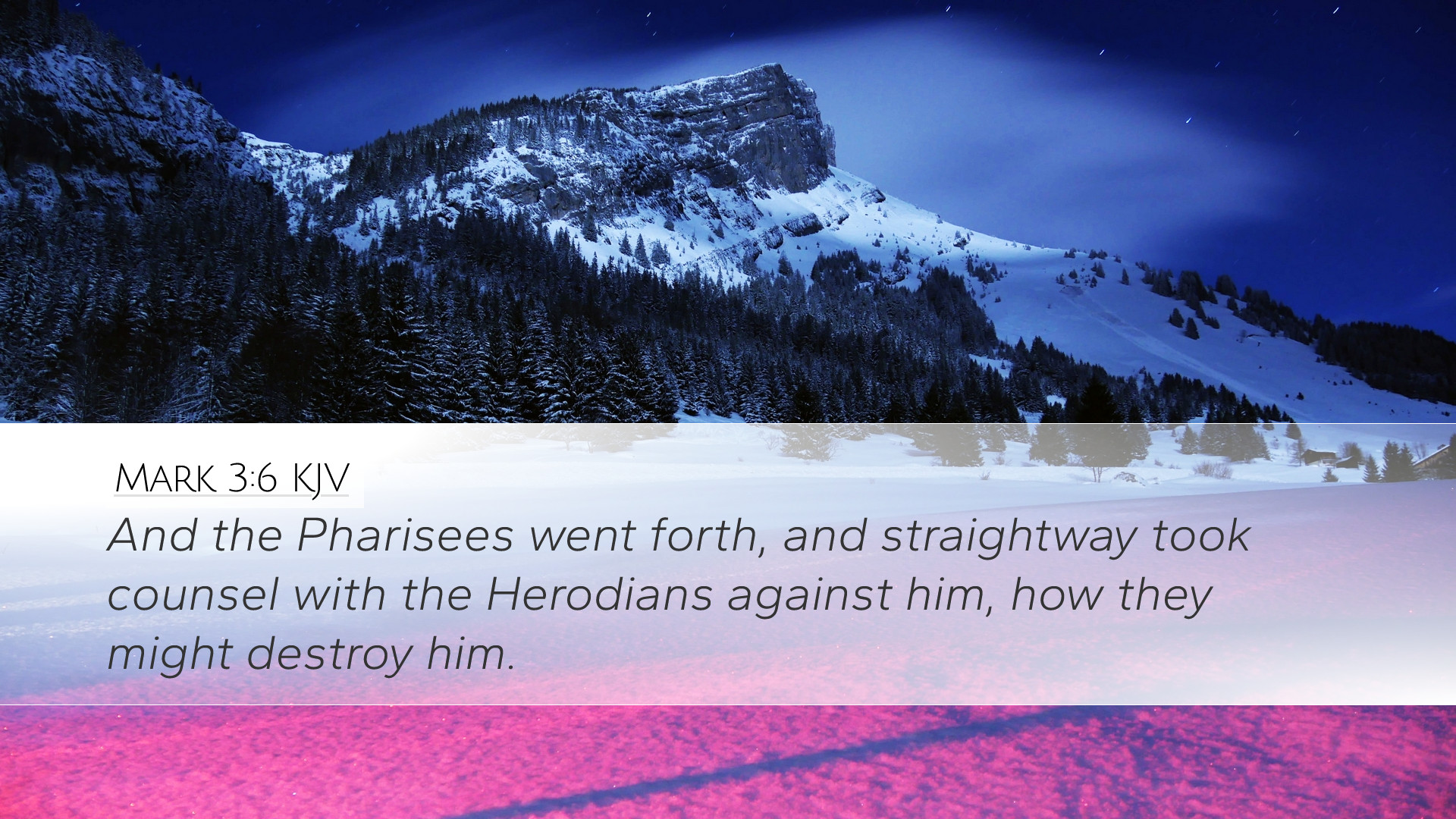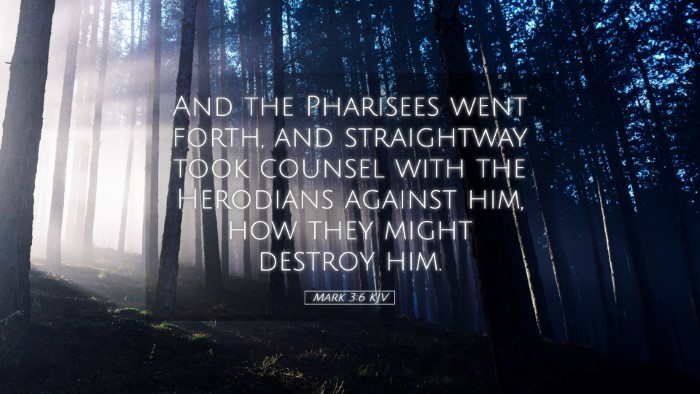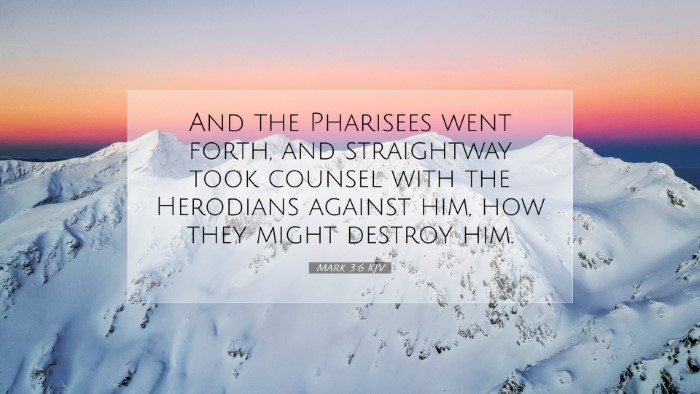Commentary on Mark 3:6
Mark 3:6 states, "And the Pharisees went forth, and straightway took counsel with the Herodians against him, how they might destroy him."
Contextual Background
This passage falls within a crucial section of the Gospel according to Mark, highlighting the escalating tension between Jesus and the religious leaders of His time. It follows the earlier accounts of Jesus’ miracles and teachings, along with conflicts over the Sabbath, which serves as a catalyst for the opposition He faced.
Insights from Commentaries
Matthew Henry's Commentary
Matthew Henry notes that this verse captures a pivotal moment where the Pharisees, traditional custodians of Jewish law, collaborate with the Herodians, a political group often regarded as compromisers with Roman rule. This unusual alliance signifies the depth of animosity against Christ. Henry emphasizes that their focus on destroying Jesus reveals both their spiritual blindness and their desperate desire to maintain control over the populace.
Henry further posits that their counsel represents a lurking threat to divine revelation. He warns against the dangerous consequences of such collusion, showing that those who might outwardly seem righteous can engage in morally reprehensible actions when fearing for their power and influence.
Albert Barnes' Notes on the Bible
Albert Barnes elaborates on the term "took counsel," which signifies a strategic plot to undermine Jesus' influence. He remarks that the presence of Herodians indicates a coalition of ideologies; those who represent Herod's political tyranny joining hands with the Pharisees' religious authority. Barnes illuminates the irony of their unity, for these two groups held opposing values yet were united in their common goal against Jesus.
In scrutinizing their intention, Barnes emphasizes the severity of "how they might destroy him," suggesting that the hostility of the Pharisees was not merely to discredit Him publicly, but to eliminate Him entirely. This acknowledgment of their sinister plot serves as a foreshadowing of the eventual crucifixion of Christ.
Adam Clarke's Commentary
Adam Clarke presents a sociopolitical lens on this passage. He notes the complexities of Jewish society at the time, marked by tension between religious observance and political undercurrents. Clarke emphasizes that the Pharisees' decision to conspire with the Herodians reflects a pragmatic adaptation to political realities, showing their willingness to set aside their differences for a common cause.
Clarke highlights a critical takeaway regarding the nature of opposition to Christ: the unity of diverse adversaries against Him signifies not just personal animosity but a deeper struggle against truth and righteousness. This insight serves as a reminder for contemporary Christians that opposition to the message of Christ often arises from unexpected alliances, urging believers to remain steadfast in faith amidst societal pressures.
Theological Implications
The synthesis of insights from these commentaries provides a rich understanding of the verse's implications for theology and practice. The actions of the Pharisees and Herodians underscore the theme of opposition to divine authority that persists throughout Scriptures. Their counsel reflects a worldview that prioritizes human power over divine revelation.
Lessons for Today's Believers
- Unity in Opposition: The collaboration between the Pharisees and Herodians serves as a stark reminder that enemies of Christ can unite against the Gospel. It calls believers to be vigilant and discerning in a world where diverse ideologies may work against a biblical worldview.
- Spiritual Blindness: The plot against Jesus illustrates the consequences of spiritual blindness, where traditionalists can become so entrenched in their beliefs that they miss the fulfillment of the law in Christ. Pastors and theologians are reminded to approach Scripture with humility and openness to divine revelation.
- Commitment to Truth: The determination to 'destroy' what is seen as a threat to their authority reflects the peril of valuing human tradition over divine truth. It's a call to persist in advocating for Biblical truths, even when faced with opposition.
Conclusion
Mark 3:6 encapsulates a critical moment in the Gospel narrative that illustrates the serious ramifications of opposing Christ. The insights from Matthew Henry, Albert Barnes, and Adam Clarke serve to deepen our understanding of the text and its implications for justice, authority, and belief. For pastors, students, theologians, and scholars, this passage is an invitation to examine the modern-day parallels of this conflict, encouraging vigilance and loyalty to the Gospel amidst societal complexities.


